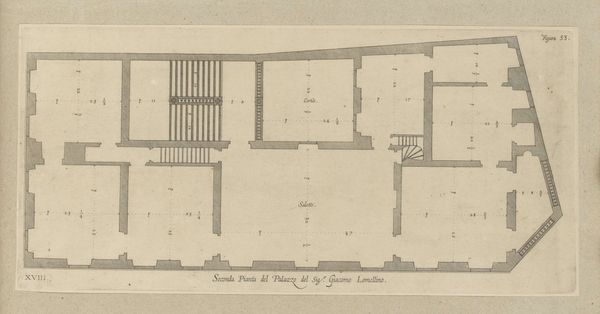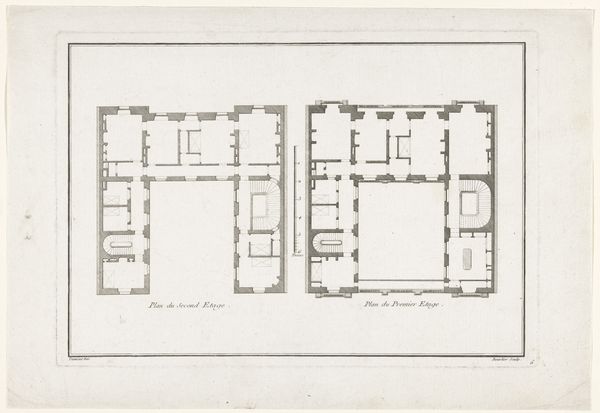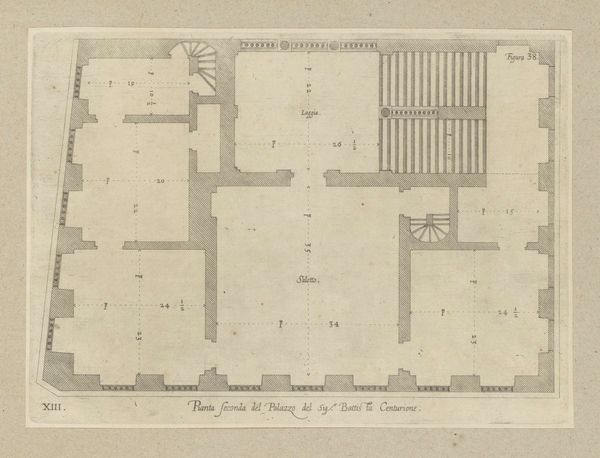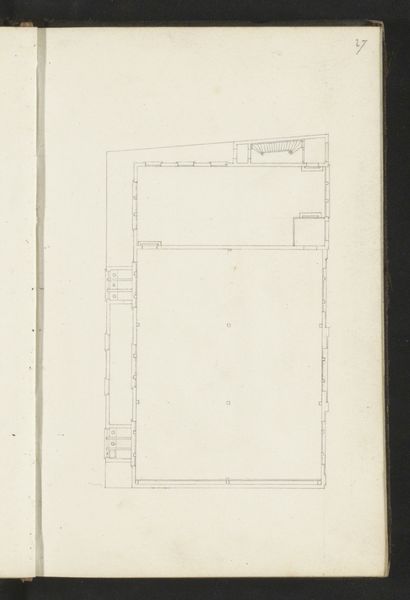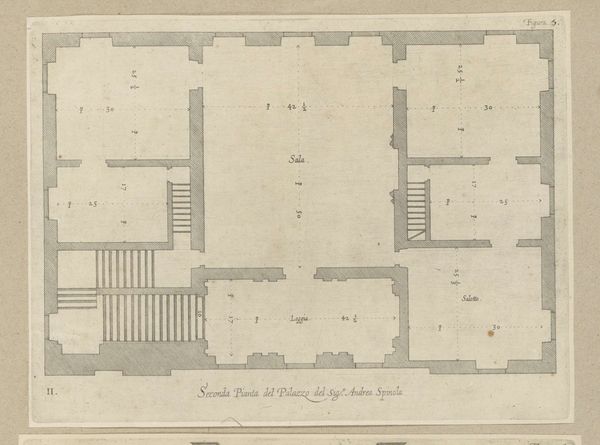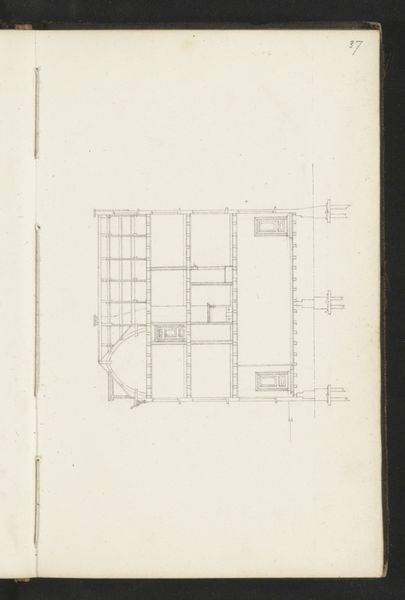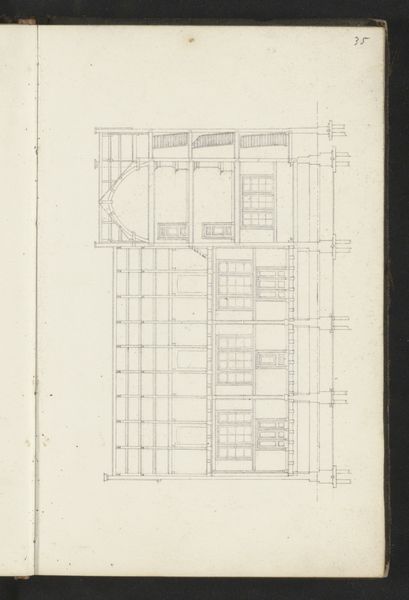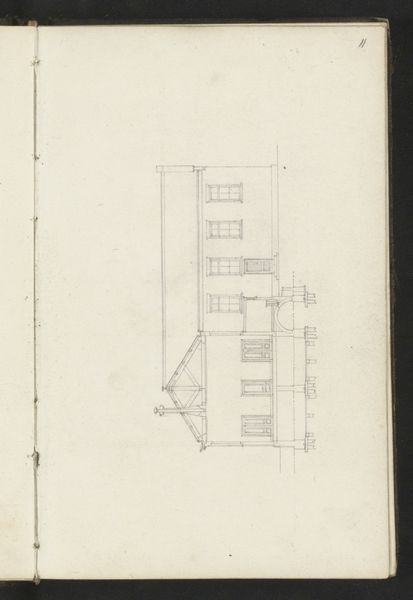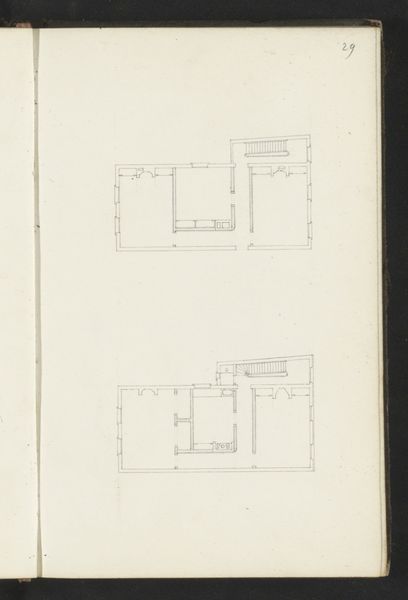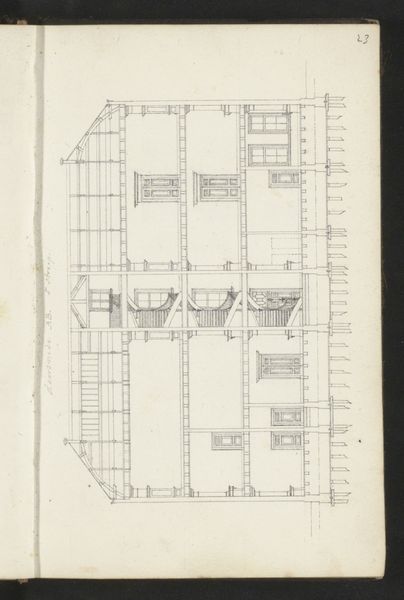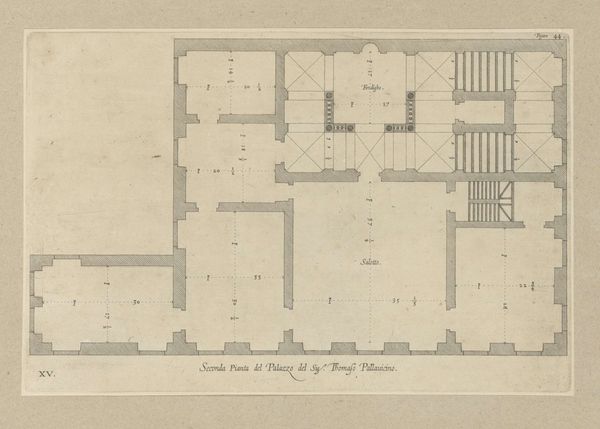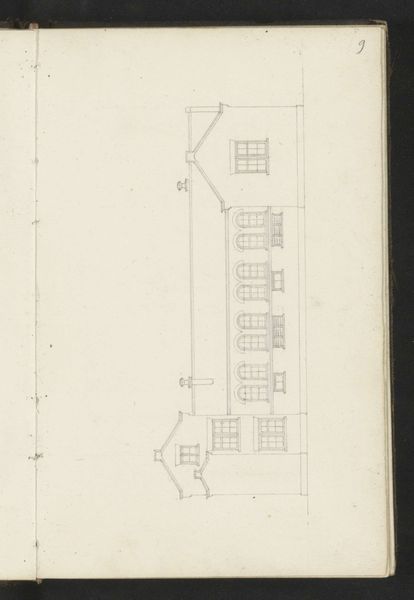
Plattegrond van de zolder van het Palazzo Carrega-Cataldi te Genua 1622
0:00
0:00
nicolaesryckmans
Rijksmuseum
drawing, print, paper, ink, engraving, architecture
#
drawing
#
baroque
# print
#
paper
#
ink
#
geometric
#
cityscape
#
history-painting
#
engraving
#
architecture
Dimensions: height 193 mm, width 252 mm, height 583 mm, width 435 mm
Copyright: Rijks Museum: Open Domain
Curator: Looking at Nicolaes Ryckmans's "Plattegrond van de zolder van het Palazzo Carrega-Cataldi te Genua" from 1622, a floor plan meticulously rendered in ink on paper, I'm immediately struck by its precision. Editor: Yes, the detail is incredible. I'm curious about this focus on architectural structure. There is a rather austere beauty in these linear representations, but where is the human element? Curator: The precision isn't merely technical; it's symbolic. Floor plans like this represent order and control during the Baroque era. This wasn’t just about depicting a space, but about demonstrating the power of architecture and the societal structures it upheld. Each line, each precisely measured room, symbolizes social hierarchy. Editor: That is quite revealing. This isn’t just a visual depiction, but a statement of power structures that benefit a small population while suppressing the rest of the population. Ryckmans' floor plan can be read as a narrative of exclusivity, defining and enforcing who belongs where within a very restricted domain. The absence of any human inhabitants makes this all the more powerful. It makes one wonder about labor relations involved in the making and the purpose of the represented space. Curator: Indeed. Even something seemingly as innocuous as a floor plan carries cultural and psychological weight. Take the stairs, for instance. They denote a means of ascension, of upward mobility, not necessarily social or political but vertical movement through the palazzo. It could even be said it mirrors the aspiration for higher knowledge, reflective of the period. Editor: And who gets to climb them? Are they equally accessible to everyone in that society? These symbols speak volumes when viewed critically. An engraving becomes a document reflecting a society's imbalances, turning the aesthetic appreciation of Ryckmans' craftsmanship into a somber reminder of inequality. Curator: Your insights force us to rethink architectural drawings as cultural documents, not just functional designs. Editor: Absolutely, recognizing the social forces at play transforms how we interpret art from the past, enriching our understanding and challenging the narratives that architecture chooses to tell, or sometimes, obscure.
Comments
No comments
Be the first to comment and join the conversation on the ultimate creative platform.
